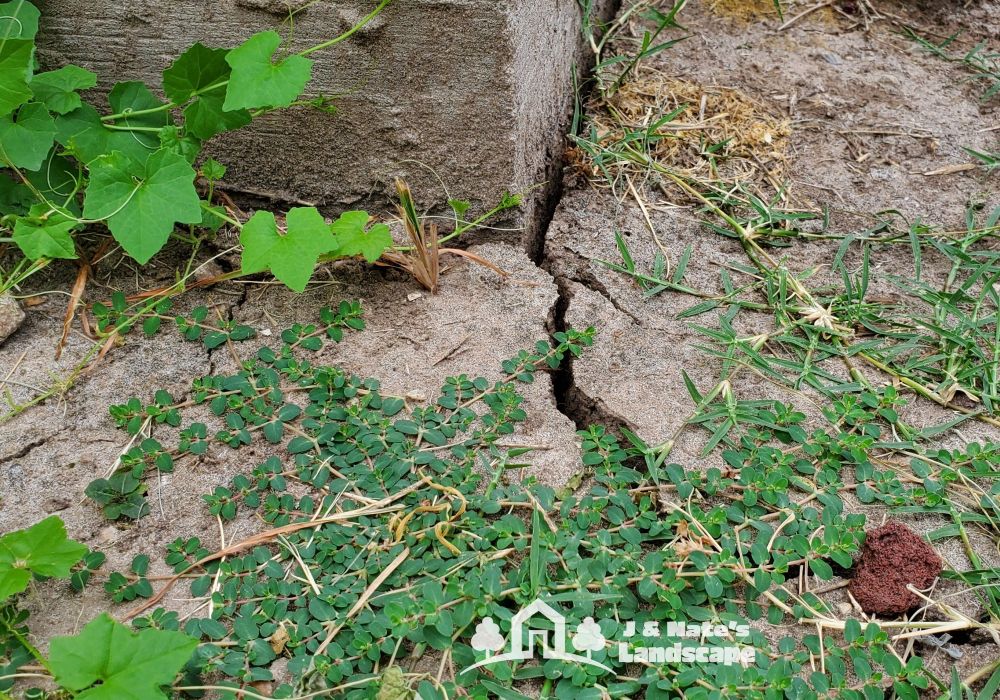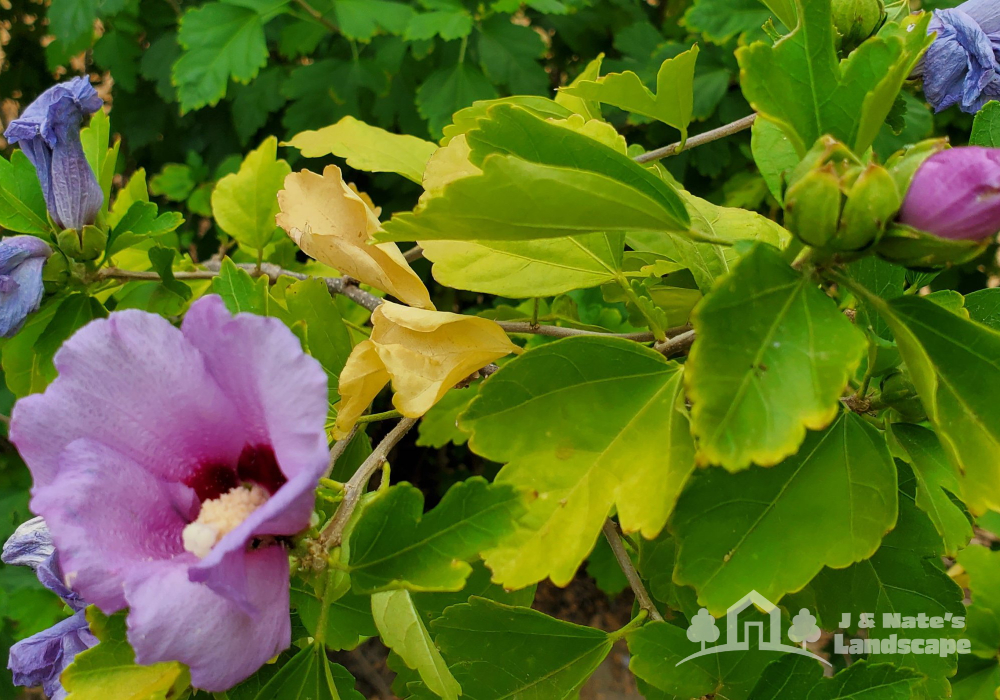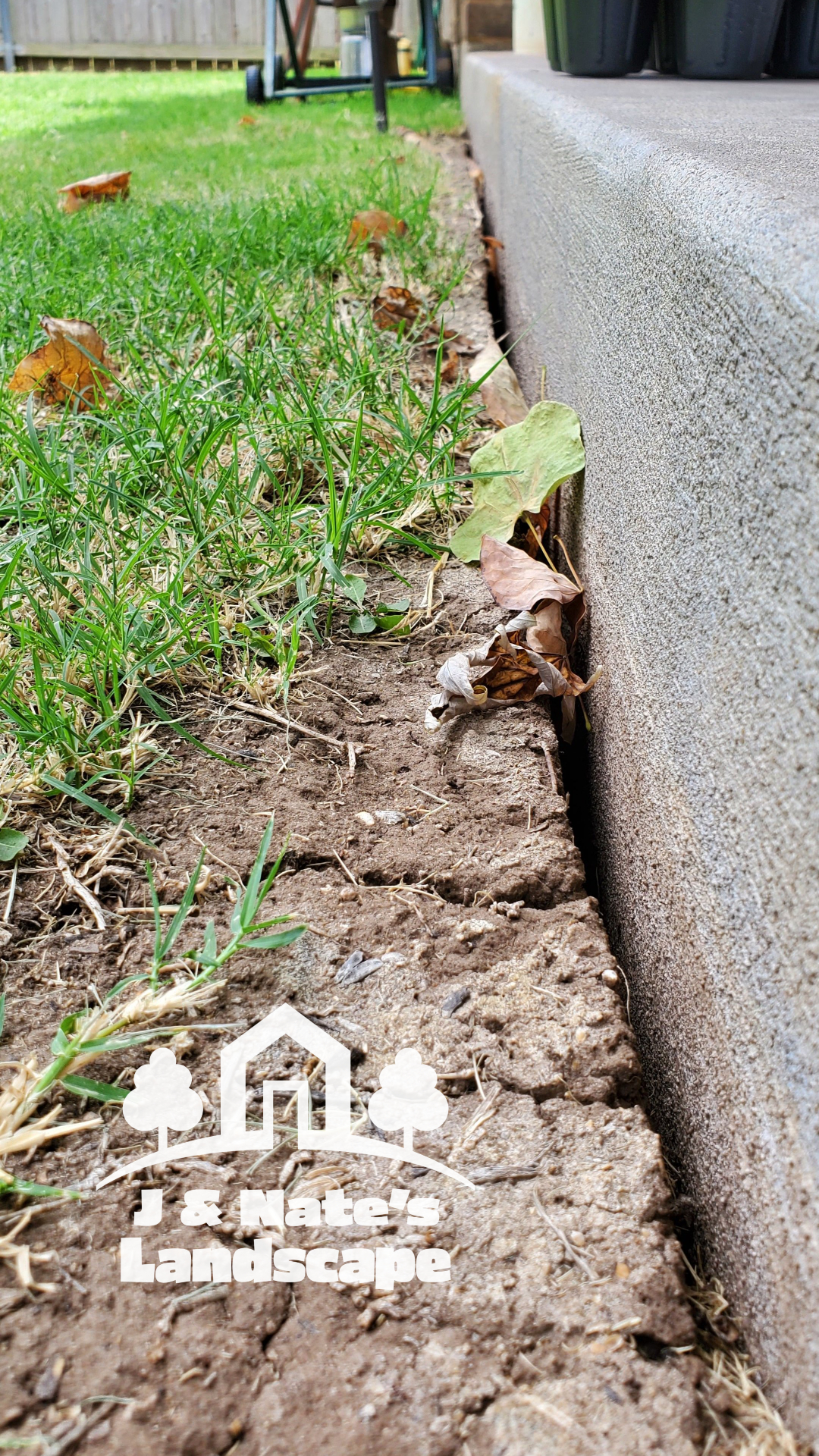As drought conditions and extreme heat broiled Oklahoma this week, our customers have noticed their lawns turning brown and gardens wilting in spite of their efforts to water and shelter them.
Some customers have reported they’ve stopped watering their lawns entirely and fear their lush Bermuda grass landscapes may never return. Other customers are focusing their watering efforts entirely on their gardens.
Here is what we recommend you do — and how we can help — so your lawns and plants survive these extreme weather conditions intact.

Water your foundation
I know this sounds like funny advice since your foundation is an inanimate object and doesn’t grow. Have you seen cracks in the ground though when the soil dries out? Cracks and shifting soil near your house can cause costly damage to your foundation. We recommend watering around your foundation in the morning or early evening every other day for about 20 minutes.

Water your garden frequently
How frequently you water your plants depends on their needs. For example, you’ll water a cactus garden much less frequently than moisture-loving astilbe. Some experienced gardeners, especially those paying for city water, recommend watering just their flowers, new trees, garden beds, and potted plants.

Rose of Sharon Hibiscus in Lexington, OK.
We recommend watering your gardens and flowers (the ones that aren’t drought tolerant) every other day in the early morning or evening. When the temperatures are really hot, water them every day.
One of our customers is watering her rose bush twice a day -- once in the early morning and once in the early evening for 20 minutes each -- when temperatures rise above 100 degrees.
Watering your lawn varies
If you have well water and we aren’t under a water rationing order, then we recommend you water your lawn for 30 minutes every other day in the early morning (around 6:30 a.m.). On the really hot days, consider watering in the early evening, around 7 p.m., on the opposite days.

If your lawn features established native grasses and clover, you may be able to water as little as once per week during drought conditions and mow up to twice per month at no less than 3 inch height.
Keep in mind, if your lawn is Bermuda grass, it may go dormant (turn brown and look dead) even if you water it because of the extreme heat. Bermuda grass does this to protect itself and will rebound when temperatures outside drop to more tolerable levels. While the grass is green though, you’ll want to set your mower height for 1 to 2 inches for common Bermuda grass varieties and mow every 5 to 7 days (though less frequently when the grass is drought stressed). Some hybrids require mowing three times per week during the growing season, but this may decrease in extreme heat and drought conditions.
If you’ve planted fescue grass in the shady areas of your yard, where the temperatures will be cooler anyway, we recommend you focus your watering efforts on those areas and consider not watering dormant Bermuda grass.
We recommend you install a sprinkler system to automate this process so your lawn can stay green in the less extreme summer temperatures.
If you're not sure, refer to the table below:
Grass Type | Frequency of Watering in 100 Degree Weather |
|---|---|
Tall fescue | Once or twice a week |
Zoysia | Three times a week |
Bermuda | Twice a week |
St. Augustine | Three or four times a week |
We're here to help
We can help you protect your gardens and landscapes, while continuing to conserve water with drip irrigation systems and mulching your gardens. We can also leave grass clippings on your lawn to help provide a protective mulch layer to retain moisture in the ground.
We’ll also help you plan for and implement a more drought and heat resistant landscape, including rock gardens, other hardscapes, and native grasses that will require less maintenance during extreme Oklahoma weather.
Just give us a call!


Great info – thanks!